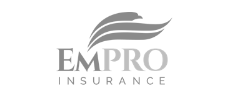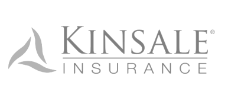Insurance for Acute Care Centers

Acute Care Centers (often called Urgent Care Centers) deliver fast treatment for injuries, infections, and sudden illness. High visit volumes, broad diagnostic scopes, and time pressure create real exposure to malpractice and business-operations claims.
Homewood Insurance helps urgent care operators secure coverage built for same-day medicine—protecting your clinicians, front desk, radiology room, procedure suite, and brand.
This page explains:
- What Insurance Includes – clear breakdown of malpractice and general liability protections tailored to urgent care.
- Cost of Coverage – realistic premium ranges and the main factors that drive price.
- Higher-Risk Activities – procedures and workflows that elevate premiums or trigger exclusions.
- Why Work With Homewood – how we help you avoid gaps and keep costs in line.
Get a Free Quote Now
Share your visit volume, hours, services offered, provider mix, and any prior claims. We’ll return options from carriers that understand urgent care and tailor coverage to your center.
Insurance for Acute Care Centers can include:
- Professional Liability (malpractice) for diagnosis, treatment, procedures, and radiology interpretation.
- General Liability for visitor injuries, property damage, and off-site events (flu clinics, community screenings).
- Employee liability options for physician extenders (nurse practitioners, physician assistants) and supervising physicians.
- Cyber and privacy coverage for protected health information and payment data.
- Optional Abuse & Molestation coverage with required safeguards.
- Defense costs paid in addition to liability limits.
- Common limits up to $1,000,000 per claim / $3,000,000 aggregate, with prior-acts and tail coverage available.
Insurance for Acute Care Centers can include:
Malpractice or liability insurance can provide essential protection against these risks:
-
Professional Liability (Malpractice) Insurance
- Misdiagnosis or delayed diagnosis (for example, cardiac, stroke, appendicitis, fracture).
- Medication errors, improper procedures (suturing, incision and drainage, foreign body removal), and adverse reactions.
- Radiology reads and over-reads (X-ray at minimum; CT/ultrasound if offered).
- Procedures with local anesthesia or minimal sedation (as allowed by license and facility policy).
- Documentation errors, referral and transfer delays, and discharge decisions.
- Entity and provider coverage (physicians, nurse practitioners, physician assistants, radiology techs, medical assistants).
-
General Liability Insurance
- Visitor/patient accidents in lobbies, triage, hallways, restrooms, or parking areas.
- Tenant/landlord property damage from water leaks, imaging equipment, or oxygen storage.
- Personal and advertising injury (defamation, use of images in marketing without consent).
- Events and pop-up clinics (school sports exams, vaccination days, employer site visits).
- Medical payments for minor injuries regardless of fault to help avoid disputes.
-
Recommended add-ons
- Cyber Liability Insurance – data breach response, regulatory investigations, ransom, and notification costs.
- Employment practices Insurance – wrongful termination, harassment, discrimination.
- Directors & Officers Insurance (for groups) – governance, contract disputes, and fiduciary oversight.
- Sexual Abuse and Molestation Insurance – requires screening, chaperone, and reporting protocols.
How much is Insurance for Acute Care Centers?
Urgent care is fast, varied, and decision-dense. Common claim drivers include:
- Diagnostic errors under time pressure or with limited patient history.
- Treatment and medication mistakes (dosing, allergies, look-alike/sound-alike drugs).
- Procedure complications (infection after laceration repair, missed foreign body).
- Radiology misreads or failure to communicate over-read changes.
- Discharge without adequate monitoring or follow-up, especially chest pain, pediatric fever, or head injury.
- Communication failures among clinicians and with patients.
- Privacy breaches through portals, imaging archives, or payment systems.
Professional Liability Insurance – Typical Annual Ranges
-
Single-site center, moderate volume: $18,000 – $40,000
-
Busy multi-provider site or extended hours: $40,000 – $85,000
-
Multi-site operator or centers with imaging/procedures: $85,000 – $150,000+
General Liability Insurance (premises and operations) — typical annual ranges
-
Single location: $1,200 – $3,500
-
Multi-location or large footprint: $3,500 – $8,000+
Recommended add-ons (guide)
-
Cyber Liability Insurance: $1,000 – $5,000+ (record volume and IT controls drive price)
-
Employment practices: $1,500 – $6,000+ (staff count and HR controls)
-
Sexual Abuse and Molestation Insurance: underwritten case-by-case with safety protocols
Key pricing factors
- Annual visit count and acuity; % pediatrics; hours (late night/7-day operations).
- Services offered (radiology, procedures, limited sedation, IV therapy, on-site pharmacy).
- Provider mix and ratios (physician oversight for nurse practitioners/physician assistants).
- Prior claims, documentation quality, and transfer protocols.
- Location (state tort environment; urban vs. suburban).





















| Service / Workflow | Why It’s Higher Risk | Controls Required | Insurance Impact |
|---|---|---|---|
| Chest pain, shortness of breath, neuro symptoms | Time-critical diagnoses (MI, PE, stroke) with severe outcomes | Triage triggers, ECG in minutes, transfer-to-ER criteria, re-checks | Material surcharge; audits of transfer/discharge decisions |
| Laceration repair, abscess I&D, foreign body removal | Infection, missed fragments, scarring and dissatisfaction | Sterility logs, imaging when indicated, clear after-care | +20–40% if high volume or poor infection metrics |
| Radiology reads (X-ray ± ultrasound/CT) | Missed fractures, pneumonia, aortic/PE mimics | Board-certified over-reads, critical results callback system | Up to +50% with on-site imaging; exclusions without oversight |
| Pediatric fever and high-risk infections | Sepsis/meningitis misses; rapid decompensation | Vital-sign thresholds, re-exam windows, caregiver education | Baseline lift; surcharges with high pediatric mix |
| Limited sedation / IV therapy | Airway events, med errors, monitoring failures | Scope/credentialing, crash cart drills, monitoring logs | Endorsement required; +40–60% possible |
| After-hours, weekends, holiday surges | Fatigue, reduced staffing, delayed transfers | Staffing ratios, on-call MD coverage, surge protocols | Higher base rates when extended hours dominate |
Best-Practice Checklists to keep Premiums Down
- Standardize triage and re-evaluation for undifferentiated chest pain, pediatric fever, and head injury.
- Use diagnostic decision aids and order sets; require over-reads for imaging with documented callbacks.
- Enforce clear transfer criteria and EMS relationships; track door-to-transfer times.
- Tight discharge instructions with red-flag symptoms and timed follow-ups.
- Maintain incident reviews and staff drills for airway events and sepsis recognition.
- Ensure physician oversight hours meet state and payer expectations for nurse practitioners/physician assistants.
Other types of Insurance Acute Care Centers may need

General Liability Insurance

Professional Liability Insurance

Sexual Abuse and Molestation Insurance

Commercial Property Insurance

Workers Compensation Insurance

Cyber Liability Insurance
Why Work With Homewood
- Coverage built for urgent care realities, not repurposed family practice policies.
- Access to nearly 100 insurance carriers, including markets that specialize in same-day medicine.
- Guidance on claims-made vs. occurrence, prior-acts and tail, and setting entity vs. individual limits.
- Help aligning protocols (triage, re-checks, imaging over-reads, transfers) with what carriers expect.
- Clear, client-friendly explanations so you know exactly what is—and is not—covered.
Call 947-274-3093 or
Fill Out the Form
Ralph Schiller
Ralph specializes in sourcing the most suitable insurance for Acute Care Centers at the best price. You can call him or fill out the form and he will get your message directly.






